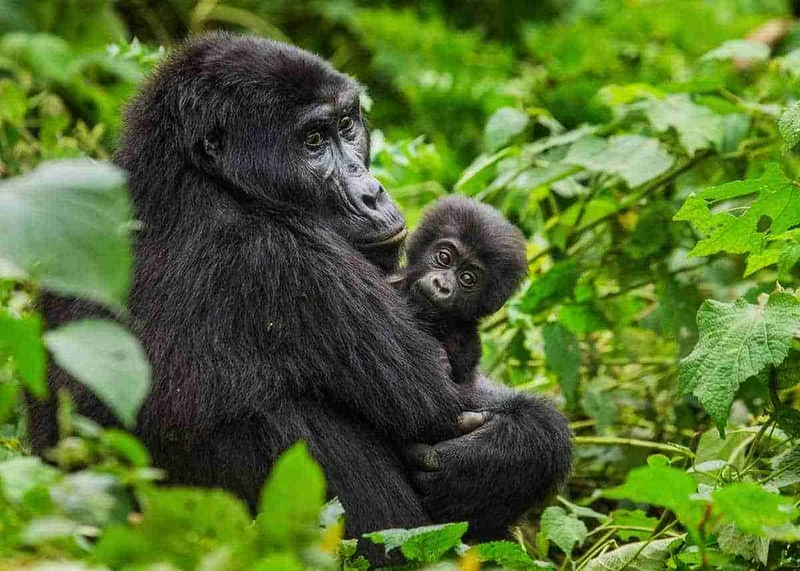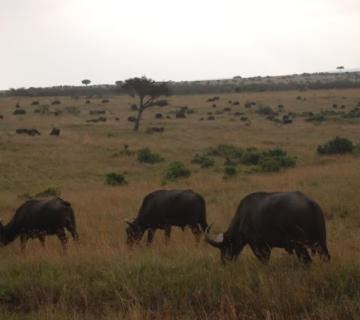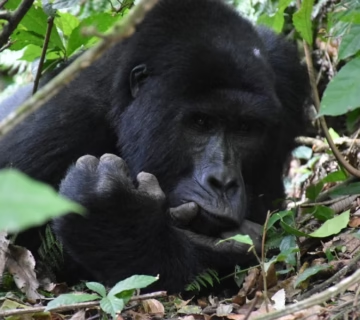What to do after gorilla habituation experience in Bwindi impenetrable national park
After the gorilla habituation experience in Bwindi Impenetrable National Park, what to do? The gorilla habituation experience is a fun thing to do in Bwindi Impenetrable National Park, where wild mountain gorillas are trained to get used to people for trekking. In the south-western part of Uganda, in the Kanungu area, you can find Bwindi Impenetrable National Park. The rare mountain gorillas live in Bwindi Impenetrable National Park.
The gorillas can be found in four areas: the buhoma sector is in the north, the nkuringo sector is in the south, the rushaga sector is in the south, and the ruhija sector is in the east. You can only get a gorilla habituation experience in the Rushaga section, which is in the southern part of Bwindi Impenetrable National Park. Each day, only four people are allowed to walk with a gorilla family.
Going on a gorilla habituation adventure in Bwindi Impenetrable National Park starts very early in the morning with a talk about the rules and laws that you need to follow while hiking. After the meeting, you will go walking in the bush with a group of scholars, park guards, and park guides. The trek lasts all day, and you will see other monkeys, animals, birds, and other things.
Once the mountain gorillas are found, you will be able to spend four hours with them in their natural environment. This gives you a chance to learn about and observe their behaviors, as well as take pictures and videos of them doing their daily tasks.
What to do after getting used to gorillas in Bwindi Impenetrable National Park
Batwa tour of culture
You can do a fun activity called a Batwa culture tour after getting used to gorillas in Bwindi Impenetrable National Park. You will be able to interact with the batwa people who used to live in Bwindi Forest before it was designated a national park. You will be able to learn about their culture, way of life, and way of living. You will also be able to visit their homesteads, learn how they hunt and gather, listen to their old stories, eat their traditional foods, and enjoy their traditional entertainments.
Nature hikes with a guide
In Bwindi Impenetrable National Park, a nature walk is an exciting activity that you can do after getting used to gorillas. A knowledgeable park manager and armed park guards will be with you on the nature walk to keep you safe from wild animals. During the guided nature walk, you will go along different paths, such as the waterfall trail, where you can see L’hoest monkeys, black and white colobus monkeys, red-tailed monkeys, blue monkeys, and many other primates. You will also be able to enjoy the cool breeze and see many different bird species.
What to do after getting used to gorillas in Bwindi Impenetrable National Park
Bird watching and walks in the woods
Birdwatching is another fun thing that visitors to Bwindi Impenetrable National Park can do after getting used to the gorillas. It is home to over 360 kinds of birds, including 23 of the 24 Albertine rift endemics, forest birds, and migrating birds. This makes it one of the best places to go birdwatching. An experienced bird guide will be with you while you go bird watching in Bwindi Impenetrable National Park.
They will help you see many types of birds, such as the African Harrier Hawk, the Black Bee-eater, the Crowned Hornbill, the Ruwenzori Nightjar, the Yellow-eyed Black Flycatcher, the Archers Robin Chat, the Strange Weaver, the Handsome Francolin, the Shelley’s Crimsonwing, the Dwarf Honeyguide, the Purple-breasted Sunbird, the Brown-capped Weaver, the Strange Weaver, the White-bellied Robin Chat, and Chapin’s Flycatcher.
There are many fun things to do after a gorilla habituation experience in Bwindi Impenetrable National Park. These include a boat cruise on the Kazinga Channel, wildlife viewing or game drives in Queen Elizabeth National Park, chimpanzee trekking in Kyambura Gorge or Kibale Forest National Park, lion tracking, and more.
When is the best time to visit Bwindi Impenetrable National Park to see gorillas getting used to their new home?
You can go gorilla trekking in Bwindi Impenetrable National Park at any time of the year, but the best time is during the dry season, which is June, July, August, September, December, January, and February. This is because there is less rain in the park during these months, so the roads leading to the park and the gorilla trekking trails will be dry and easy to use.
How much it costs to live with gorillas in Bwindi Impenetrable National Park
A gorilla habituation pass in Bwindi Impenetrable National Park costs 1,500 USD for foreigners who don’t live in Uganda and 1,000 USD for foreigners who do live in Uganda. East African citizens pay 750,000 UGX per person.
Tips on where to stay in Bwindi Impenetrable National Park while on tour
There are a variety of places to stay in Bwindi Impenetrable National Park, ranging from cheap to high-end. Some of these are Rushaga Gorilla Lodge, Gorilla Safari Lodge, Ichumbi Lodge, Rushaga Gorilla Haven Lodge, Gorilla Heights Lodge, Four Gorillas Lodge, Clouds Mountain Gorilla Lodge, Bwindi Gorilla Lodge, Gorilla Leisure Lodge, Mutanda Lake Resort, Lake Chahafi resort, Nshongi Camp, Bwindi Jungle Lodge, Lake Mulehe Gorilla Lodge, Wagtail Eco Safari Lodge, and Bweza Lodge.
How to get there
Bwindi Impenetrable National Park is in the southwestern part of Uganda. To get there, you can take a safari car from Kampala and drive through Masaka, Mbarara, Kabale, and then to the Rushaga area. The whole trip takes about 9 to 10 hours.
To get to Bwindi Impenetrable National Park, you can also book regular or charter local flights from Entebbe International Airport to Kisoro runway. From there, you can take a road to the park offices. The tour company you trust can help you book domestic flights to Bwindi Impenetrable National Park.
Bwindi Impenetrable National Park can also be reached from Kigali, Rwanda. Traverse will fly to Kigali International Airport and then cross to the Rushaga Sector via the Cyanika Border in Kisoro or the Katuna Border in Kabale, which takes about 4 to 5 hours by car.


